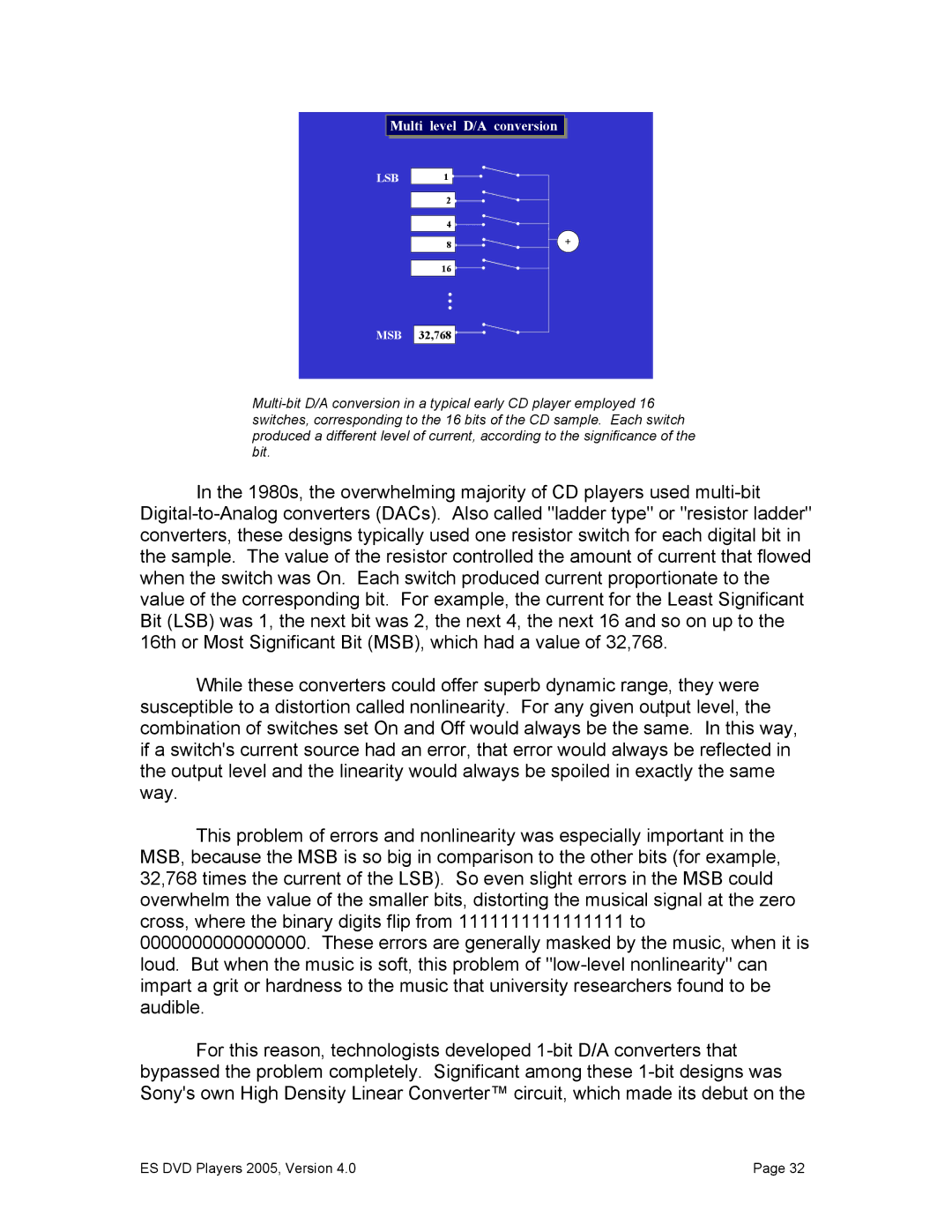
MultiMulti levellevel D/AD/A conversionconversion
LSB | 1 |
|
| 2 |
|
| 4 |
|
| 8 | + |
| 16 |
|
… MSB 32,768 ![]()
![]()
In the 1980s, the overwhelming majority of CD players used
While these converters could offer superb dynamic range, they were susceptible to a distortion called nonlinearity. For any given output level, the combination of switches set On and Off would always be the same. In this way, if a switch's current source had an error, that error would always be reflected in the output level and the linearity would always be spoiled in exactly the same way.
This problem of errors and nonlinearity was especially important in the MSB, because the MSB is so big in comparison to the other bits (for example, 32,768 times the current of the LSB). So even slight errors in the MSB could overwhelm the value of the smaller bits, distorting the musical signal at the zero cross, where the binary digits flip from 1111111111111111 to 0000000000000000. These errors are generally masked by the music, when it is loud. But when the music is soft, this problem of
For this reason, technologists developed
ES DVD Players 2005, Version 4.0 | Page 32 |
